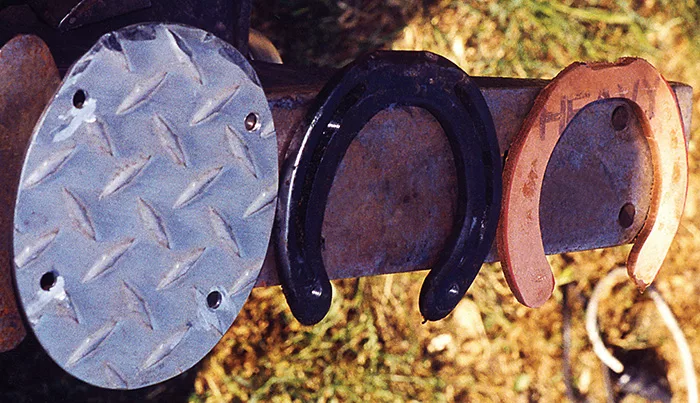American Farriers Journal
American Farriers Journal is the “hands-on” magazine for professional farriers, equine veterinarians and horse care product and service buyers.

PARTS INVENTORY. Three common elements of a hospital plate include (from left) the removable plate that is mounted to the ground surface of the shoe, the shoe itself and a rim pad. A pad is not necessarily used with every plate plate.
Farriers moving from horse to horse commonly encounter hoof abscesses. Often during treatment, a severe hoof abscess or other foot problem will expose sensitive tissue, necessitating more extensive measures such as a veterinary examination and the application of a hospital plate.
Foot abscesses don’t normally require a treatment plate, say noted equine veterinarians Scott Morrison of Rood & Riddle Veterinary Clinic in Lexington, Ky., and Stephen O’Grady of Northen Virginia Equine in Marshall, Va.
“A routine abscess usually just needs drainage, a foot pack and keeping the foot clean until the area stops draining and the horse is sound,” says Morrison. “Then the foot goes into a shoe and a pad.”
He recommends a hospital plate, often called a treatment plate, when sensitive, exposed tissue needs protection from trauma or bruising. Such cases include, he says, an extensive abscess, a coffin bone debridement, removal of a keratoma and other surgical procedures performed on the bottom of the foot.
O’Grady agrees, noting that a removable treatment plate allows observation of the affected area, application of medication and protection of the foot.
He adds, “It’s used as a transition from the time of the injury or surgery until the time that you can cover the foot with a…